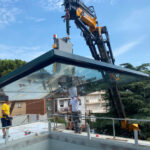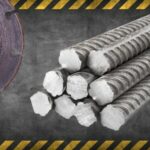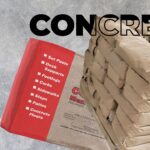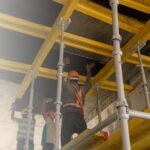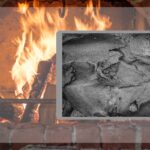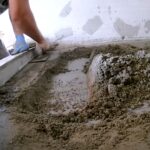Creating a warm, inviting, and safe environment in your home is no easy task, especially when it comes to choosing the right materials for your fireplace. The use of appropriate concrete for the fireplace is essential, not only for aesthetic appeal but also for functionality and longevity. This article aims to unravel the mystery surrounding the right type of concrete for your fireplace, considering factors such as heat resistance, durability, aesthetic qualities, and more.
Fireplaces in a Nutshell
Before diving into the various types of concrete suitable for fireplaces, it’s vital to understand the basics of a fireplace’s construction and function.
Construction
Constructing a fireplace involves several components, each serving a specific function and made from different materials. The firebox, hearth, damper, flue, mantel, and ash dump are the main parts. Each element must withstand high temperatures and corrosive substances produced during the burning process.
Fireplaces have evolved significantly over the years. The traditional brick-and-mortar type is slowly giving way to contemporary designs that incorporate concrete. However, not all concrete is suitable for fireplace construction due to the extreme conditions they are subjected to.
Role of Concrete
Concrete plays a critical role in fireplace construction. Its versatility allows it to serve multiple purposes, from forming the core structure to creating decorative elements.
Its innate thermal properties make it suitable for fireplace construction. It absorbs, stores, and radiates heat efficiently, enhancing overall efficiency. However, the concrete used must be capable of withstanding high temperatures and other rigorous demands of a functioning fireplace.
Types of Concrete for Fireplaces
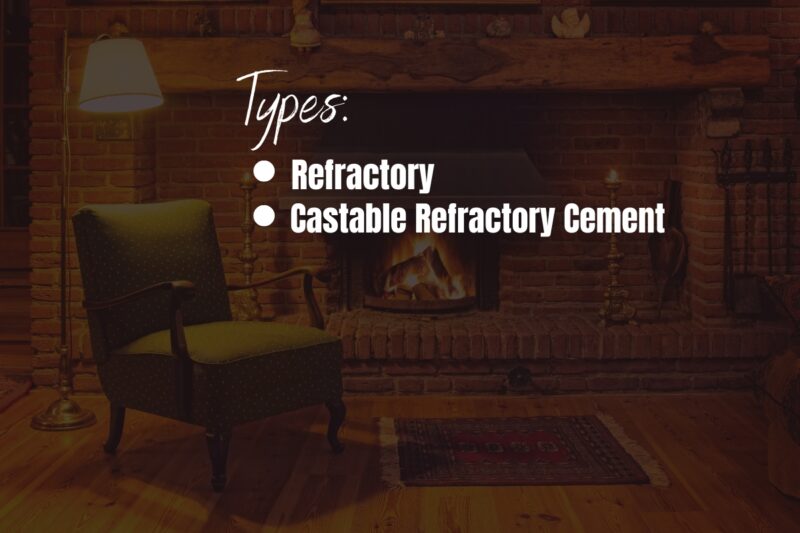
Selecting the right type for your fireplace can be tricky. Here’s a brief introduction to the different types that can be used.
Refractory
Refractory concrete is specifically designed to withstand high temperatures, making it an excellent choice for fireplaces.
It possesses properties that can endure the intense heat generated by a fireplace. This type is able to withstand temperatures above 1000 degrees Fahrenheit, making it ideal for constructing fireboxes and fireplace liners. Moreover, refractory concrete does not crack or warp under high heat, ensuring the durability and longevity of your fireplace.
Castable Refractory Cement
Another option is castable refractory cement, which is a pre-mixed form of refractory concrete. It is specially designed to withstand extreme temperatures.
Unlike regular type, castable refractory cement does not require reinforcement with rebar or wire mesh, simplifying the construction process. The cement retains its structural integrity even at high temperatures, making it suitable for fireplaces, particularly for creating the firebox and liner.
Comparison With Other Materials
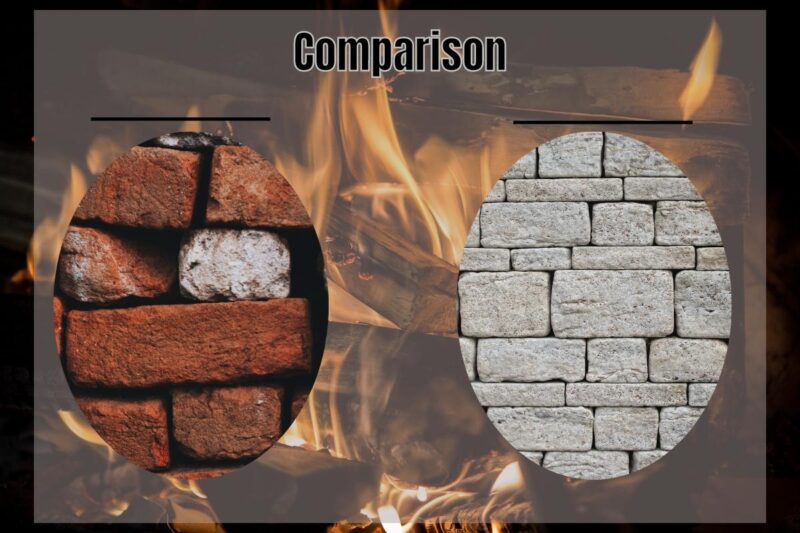
How does concrete stack up against other common fireplace materials, such as bricks and stones?
Bricks
Brick is a traditional material for fireplaces, known for its aesthetic appeal and durability. However, concrete brings certain advantages to the table.
While both materials can withstand high temperatures, concrete offers more design flexibility compared to brick. It can be molded into various shapes and sizes, offering a more customized look. Furthermore, it tends to be more cost-effective than brick, making it a budget-friendly option for homeowners.
Stone
Stone fireplaces offer a timeless, rustic charm. However, just like with bricks, concrete offers certain benefits over stone.
Stone fireplaces can be expensive and challenging to install. On the other hand, concrete is easy to work with and less costly. Additionally, its thermal properties are superior to stone, resulting in better heat distribution and efficiency.
Choosing the Right Mix
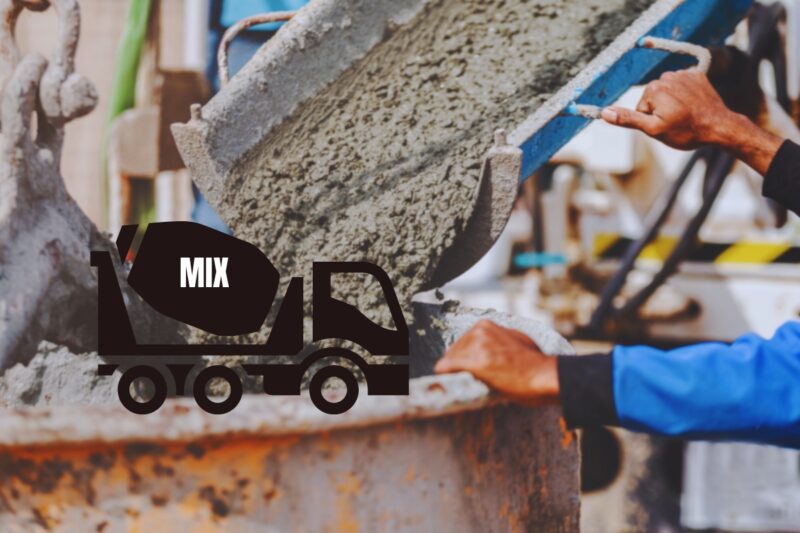
The composition of the concrete mix plays a significant role in the performance of a fireplace. Here are two main factors to consider:
Heat Resistance
The concrete mix for a fireplace must be heat-resistant. This involves using materials that can withstand high temperatures.
Key ingredients in a heat-resistant concrete mix include Portland cement, lime, silica sand, and fireclay. These components contribute to the concrete’s ability to resist thermal shock and high temperatures. Note that the ratios may vary depending on the specific application within the fireplace.
Insulation Properties
Insulation is another critical factor when choosing a concrete mix for a fireplace.
The right mix should have insulating properties to ensure that heat is retained and radiated efficiently. Perlite or vermiculite are often added to the mix to enhance insulation. These lightweight materials improve thermal performance without compromising structural integrity.
Installation Tips
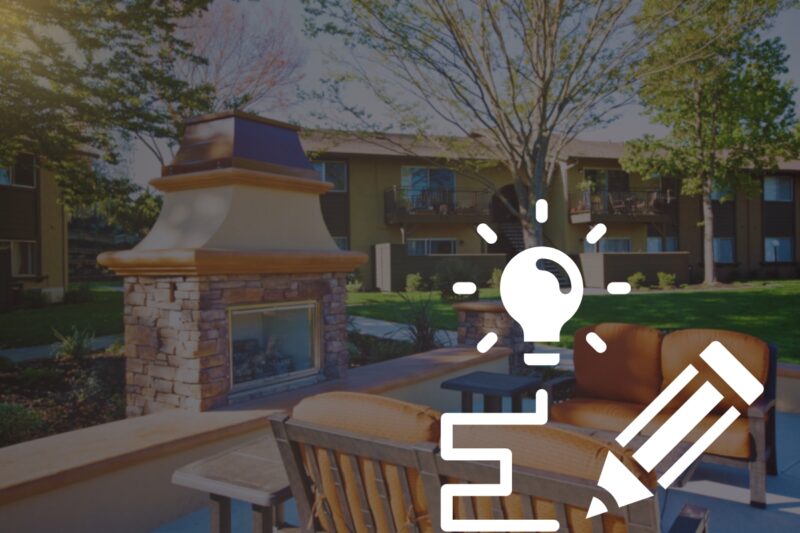
Installing a concrete fireplace involves careful planning and execution. Here are some practical tips to guide you through the process.
Preparing the Site
Proper site preparation is crucial for a successful installation.
- Ensure the base is solid and level. If the base is not stable, the concrete could crack.
- Use a formwork to mold concrete into the desired shape.
- Reinforce it with rebar or wire mesh for additional strength, except when using castable refractory cement.
Curing Process
Curing is a vital process that ensures the concrete attains its full strength.
- Allow it to cure slowly to prevent cracking.
- Keep it damp during the curing process to prevent it from drying out too quickly.
- Wait at least a week before using the fireplace to ensure it has cured fully.
FAQs
How long should a newly built fireplace be allowed to cure before exposing it to high heat?
Once the fireplace is built, it should be allowed to cure for at least 7 – 10 days before exposing it to high heat.
What are some recommended concrete mixes for high-heat applications?
Companies like Sakrete and Quikrete both make special mixes for high-heat applications. Sakrete High Heat Mortar mix is designed for setting masonry units in a fireplace or chimney and can withstand temperatures up to 2550°F. Quikrete makes a fireplace mortar repair cement that can withstand temperatures of 2000˚F.
What happens to concrete when exposed to high temperatures in a fireplace hearth?
When concrete mortar is exposed to extremely high temperatures, its tensile and compressive strength can decrease. To compensate for this strength loss, special mixes are used when building a fireplace hearth.
What is high alumina cement?
High alumina cement (HAC) is made up of calcium aluminates, sand, and refractory aggregates like crushed brick, limestone, or slag. Including these ingredients makes concrete both strong and heat resistant.
What is refractory cement?
Refractory cement is cement with heat-resistant properties such as refractory particles or aggregate. Examples of refractory cement are Quikrete Fireplace Mortar, Sakrete High Heat Mortar, and Rutland Castable Refractory Cement.
What is the role of high alumina cement and refractory aggregates in a fireplace?
High-heat concrete that includes sand, crushed bricks, and high alumina cement are required to build your fireplace strong and durable. Without these ingredients, regular concrete can’t handle the heat of a fireplace.
How to make high-heat fireproof concrete?
It is made by mixing refractory cement, stone, hydrated lime, and sand in the correct ratios. The ingredients follow a 1:2:3:0.5 concrete mix ratio. That means 1 part refractory cement, 2 parts sand, 3 parts gravel, and 0.5 parts hydrated lime.
What are the properties of concrete at high temperatures?
The mechanical properties deteriorate at temperatures above 300°C (572°F). The following characteristics are needed from the concrete used to build a fireplace: tensile strength, compressive strength, stiffness, spalling, and heat resistance.
Can concrete explode in a fireplace?
Yes, it can explode when exposed to extremely high heat. This is due to the small pores in it that trap moisture. When the concrete is heated quickly, the water inside its pores can turn into steam, creating internal pressure. Parts of it can break and blow out as a result of the increased pressure.
Final Words
Choosing the right concrete for your fireplace is a decision that requires careful consideration of factors such as heat resistance, durability, and design flexibility. Whether you opt for refractory or castable refractory cement, ensure it is properly installed and cured for optimal performance and longevity.


